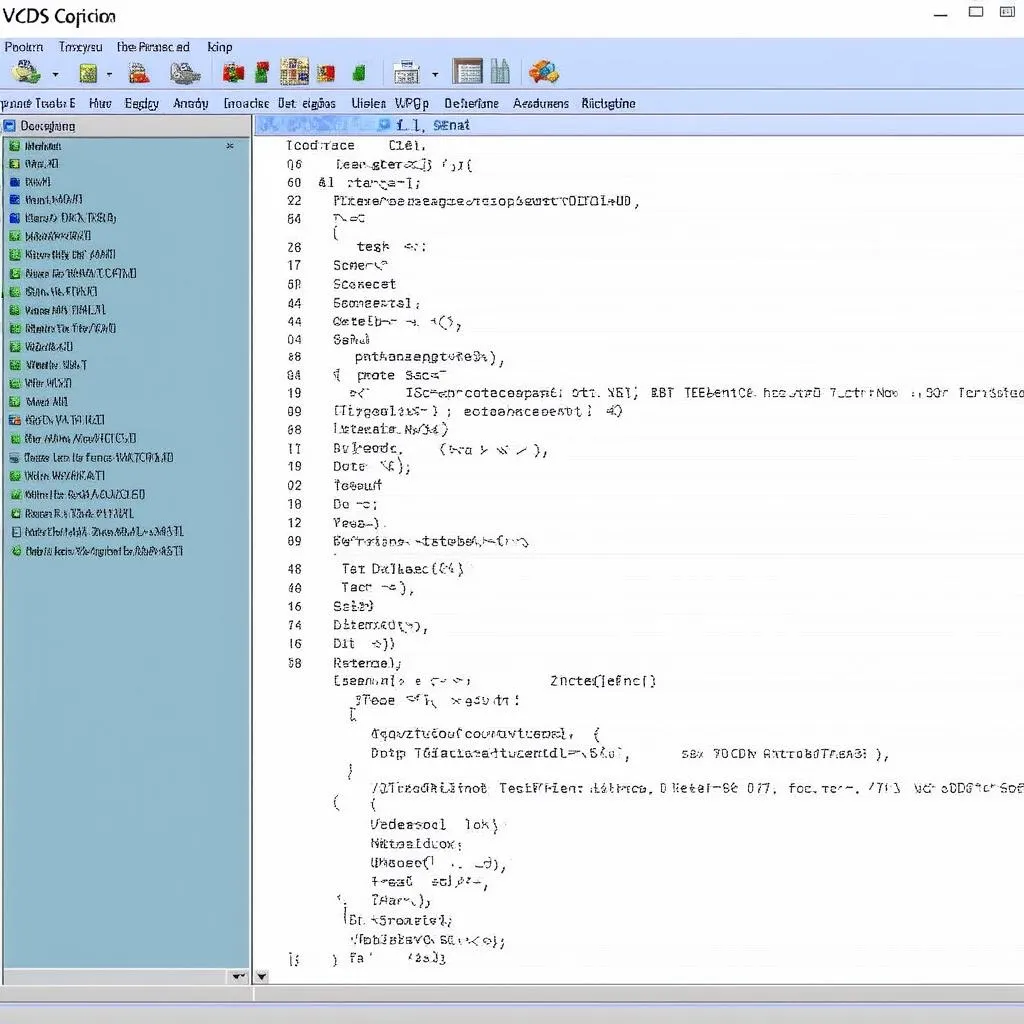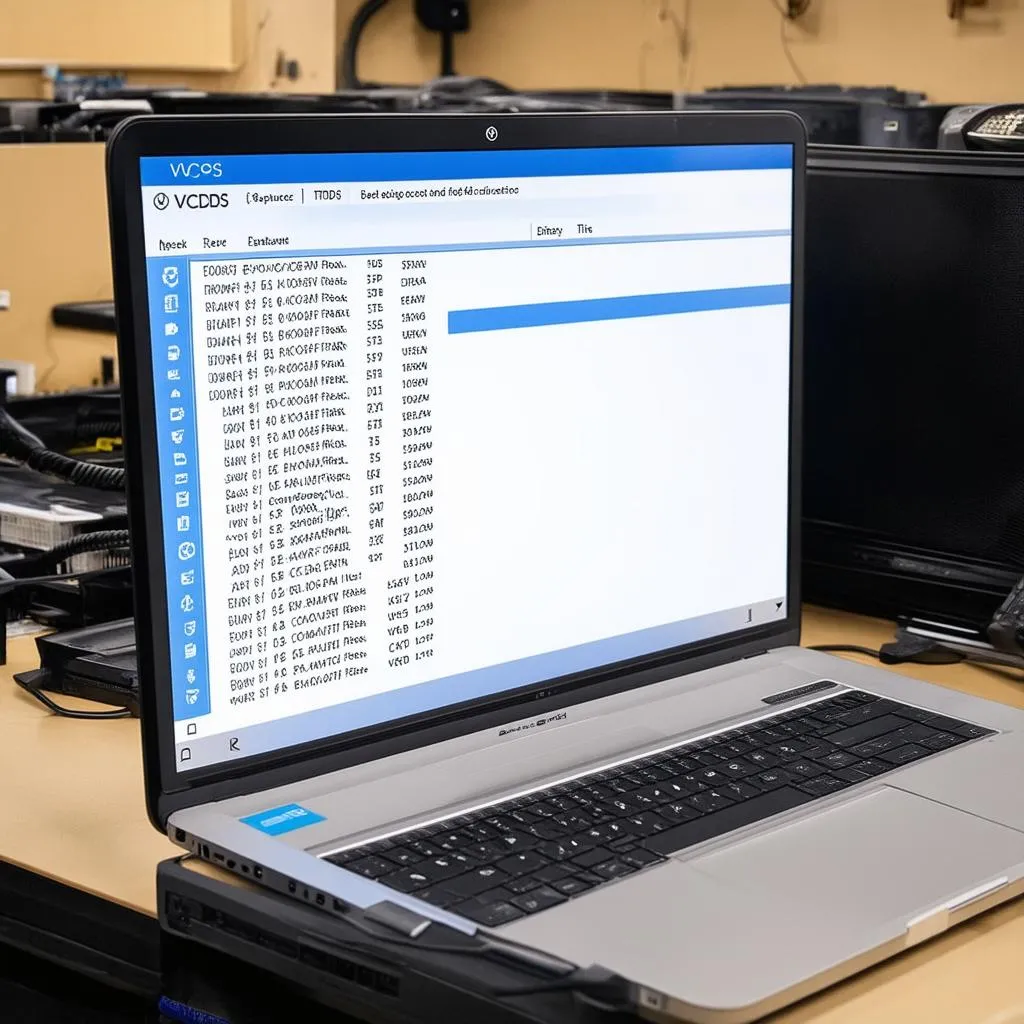The dreaded “VCDS Central Convenience No Response” message can be a frustrating roadblock for any VW/Audi owner. This article dives deep into the causes, diagnostic procedures, and solutions for this common issue, providing you with the knowledge to tackle it head-on.
Addressing the “VCDS Central Convenience No Response” issue requires a systematic approach. Often, the problem stems from communication errors between the VCDS software, the diagnostic interface, and the car’s central convenience module. Let’s explore the potential culprits.
Understanding the Central Convenience Module and VCDS
The Central Convenience module (CCM) acts as the brain for various comfort and convenience features in your Volkswagen or Audi. It controls everything from central locking and power windows to interior lighting and alarm systems. VCDS (VAG-COM Diagnostic System) is a powerful software tool that allows you to access and interact with the various control modules in your car, including the CCM. When you receive a “no response” message, it indicates a breakdown in communication. Similar to vcds 908, understanding the software and hardware interaction is crucial.
Common Causes of “VCDS Central Convenience No Response”
Several factors can contribute to the “VCDS Central Convenience No Response” error. These include faulty wiring or connections, a malfunctioning CCM, incorrect VCDS software configuration, or even a problematic diagnostic interface. Pinpointing the root cause requires careful diagnosis.
Wiring and Connection Issues
One of the most common culprits is a problem with the wiring harness connecting the diagnostic interface to the OBD-II port or the wiring within the car itself. Damaged wires, loose connections, or corroded terminals can disrupt communication.
Malfunctioning Central Convenience Module
A faulty CCM can also trigger the “no response” message. Internal component failures within the module can prevent it from communicating with the diagnostic interface.
VCDS Software and Interface Problems
Sometimes, the problem lies with the VCDS software or the diagnostic interface itself. Outdated software versions, incompatible drivers, or a faulty interface cable can all lead to communication errors.
Diagnosing the Problem
Begin by checking the basics. Ensure the diagnostic interface is securely connected to both the computer and the car’s OBD-II port. Verify the ignition is switched on. If the problem persists, try using a different diagnostic interface or cable to rule out hardware issues. This process is similar to diagnosing issues with what does vcds do.
Checking VCDS Software and Drivers
Ensure you are using the latest version of the VCDS software and that the correct drivers are installed. Refer to the Ross-Tech website for the latest updates and compatibility information. Think of this step as similar to checking for updates when experiencing issues with audi a3 8p vcds mods.
Inspecting Wiring and Connections
Carefully examine the wiring harness and connections between the diagnostic interface and the OBD-II port. Look for any signs of damage, loose connections, or corrosion. A multimeter can be used to check for continuity.
Solutions and Fixes
Once you have identified the root cause, you can implement the appropriate solution.
Repairing or Replacing Wiring and Connections
If you find any damaged wiring or loose connections, repair or replace them as necessary. Ensure all connections are clean and secure.
Replacing the Central Convenience Module
If the CCM is determined to be faulty, it will need to be replaced. This usually involves coding the new module to your car’s specific configuration.
Updating VCDS Software and Drivers
If the problem lies with the VCDS software or drivers, update them to the latest versions. This often resolves compatibility issues. Just as with vcds acc, keeping the software up-to-date is crucial for optimal performance.
Preventing Future Issues
Regularly inspecting your car’s wiring and connections can help prevent future communication problems. Keeping your VCDS software and drivers up to date is also essential.
Conclusion
The “VCDS Central Convenience No Response” error can be a frustrating experience, but with a systematic approach to diagnosis and troubleshooting, you can often resolve the issue yourself. Remember to check the basics, inspect wiring and connections, and ensure your VCDS software and drivers are up to date. By following the steps outlined in this article, you can get your car’s convenience features back up and running smoothly. Similar to understanding vcds lite coding, tackling these issues empowers you to maintain your vehicle effectively.
FAQ
- What is the Central Convenience Module?
- How do I use VCDS to diagnose my car?
- What are the common causes of a “no response” error?
- How can I check my car’s wiring and connections?
- Where can I find the latest VCDS software updates?
- How do I replace a faulty Central Convenience Module?
- How can I prevent future “no response” errors?
For further assistance, please contact us via Whatsapp: +1 (641) 206-8880, Email: CARDIAGTECH[email protected] or visit us at 276 Reock St, City of Orange, NJ 07050, United States. Our customer support team is available 24/7.


